In the realm of visual technology, OLED stands as a beacon of innovation, transforming how content is experienced across various settings. The advent of OLED TV in 2024 marks a pivotal moment, offering unparalleled picture quality, deep contrast ratios, and superior color accuracy. These features not only elevate the viewing experience but also cater to the nuanced demands of professional environments, where clarity and detail are paramount. As the industry evolves, understanding the capabilities and diversity of OLED TVs becomes crucial. Making an informed choice now involves navigating through a landscape rich with options, each promising to redefine visual engagement and enhance how audiences connect with digital content.
Table of Contents
1. Illuminating spaces: Types and applications of OLED TVs
2. Bright prospects: An overview of the OLED TV market
3. Criteria for excellence: Selecting the right OLED TV
4. Leading the charge: Top OLED TV models of 2024
5. Conclusion
Illuminating spaces: Types and applications of OLED TVs
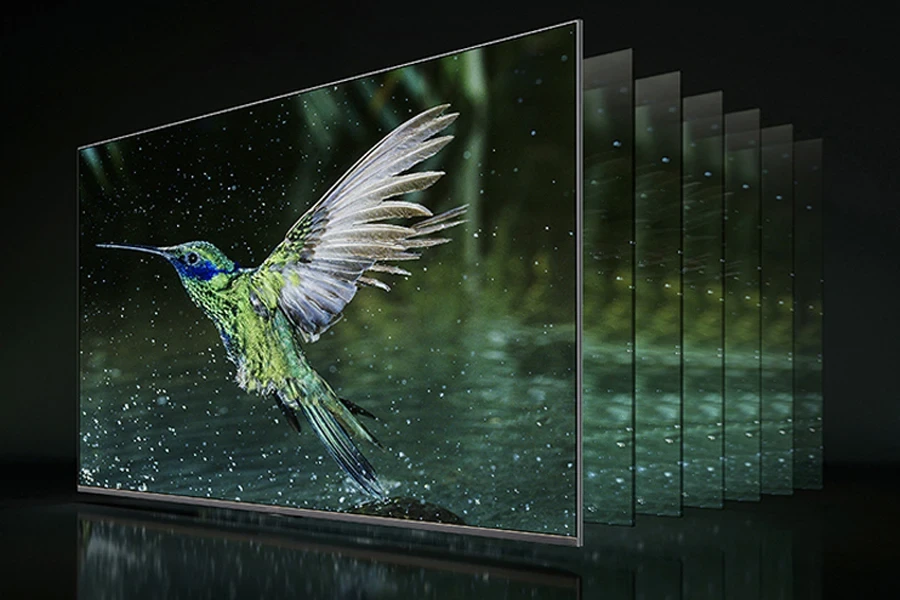
As the landscape of visual display technology broadens, OLED TVs emerge as a significant advancement, offering a spectrum of possibilities for both entertainment and professional environments. The intricacies of OLED technology, including QD-OLED and WOLED, bring forth a revolution in how viewers engage with digital content, pushing the boundaries of color, contrast, and clarity.
Different shades of brilliance
OLED technology, standing at the forefront of modern visual display, encompasses various methods that cater to an array of viewing experiences. Among these, QD-OLED (Quantum Dot Organic Light Emitting Diode) and WOLED (White Organic Light Emitting Diode) represent two pioneering approaches, each with distinct characteristics and benefits that set them apart in the realm of OLED TVs.
QD-OLED: A fusion of color and clarity
QD-OLED technology marries the precision of quantum dots with the self-illuminating properties of OLED panels. Quantum dots are nanocrystals that emit very specific colors when illuminated, which significantly enhances the color range and brightness of the display. When integrated with OLED’s ability to turn individual pixels on or off, QD-OLED displays achieve extraordinary color accuracy and brightness levels exceeding those of traditional OLEDs.

Unique Characteristics:
Broader Color Spectrum: QD-OLED TVs can display a wider range of colors, making the visuals more vibrant and lifelike.
Enhanced Brightness: By leveraging quantum dots, these TVs can achieve higher peak brightness, making them more suitable for brightly lit environments without sacrificing color quality.
Improved Efficiency: QD-OLED technology is more energy-efficient, translating to longer display lifespans and lower power consumption.
Benefits:
Superior Viewing Experience: The combination of enhanced color and brightness offers viewers a more immersive and visually stunning experience.
Versatility: High brightness levels make QD-OLED TVs versatile for various lighting conditions, from dark home theaters to well-lit living rooms.
WOLED: The harmony of light and color
WOLED technology utilizes a white OLED substrate composed of red, green, blue, and sometimes additional white subpixels. This white light is then passed through color filters to produce the full color spectrum on the screen. The use of a universal white light source across the panel ensures consistent brightness and color accuracy, making WOLED a preferred choice for large-screen TVs.
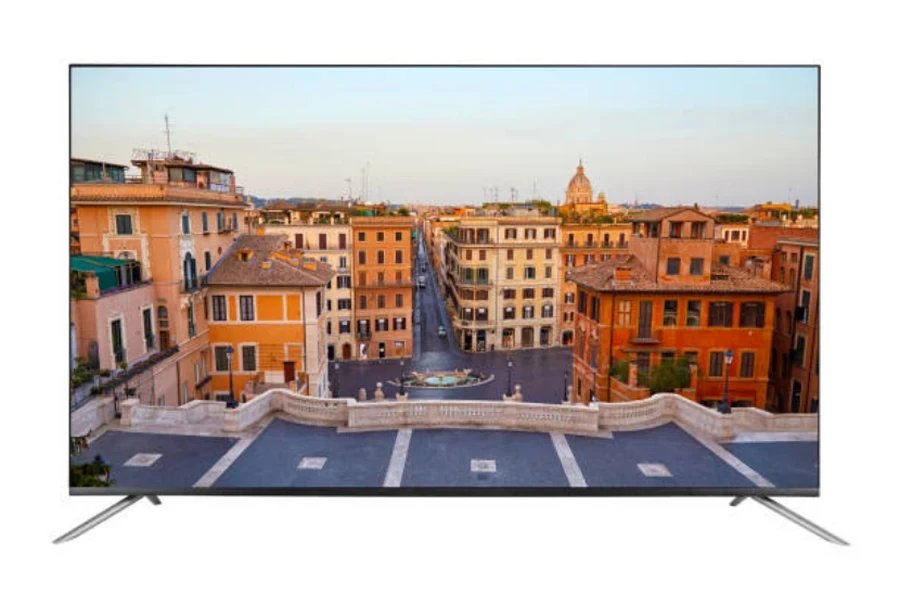
Unique characteristics:
Uniform Brightness and Color: The homogeneous white light source across the panel ensures even brightness and accurate color distribution.
Simplicity in Design: The process of using color filters over a white light source simplifies the panel’s architecture, allowing for thinner and more flexible displays.
Energy Efficiency: WOLED displays are known for their energy efficiency, contributing to lower electricity usage and heat generation.
Benefits:
True-to-Life Image Reproduction: WOLED TVs excel in delivering images with deep blacks, vivid colors, and remarkable clarity, closely mimicking real-life visuals.
Design Flexibility: The thin and lightweight nature of WOLED panels offers unparalleled design flexibility, enabling sleek TV designs and potential for innovative form factors.
Both QD-OLED and WOLED technologies represent significant advancements in OLED TV technology, each suited to different preferences and requirements. QD-OLED stands out for its vibrant colors and brightness, ideal for viewers seeking the most dynamic visual experience. In contrast, WOLED offers consistency and efficiency, perfect for those prioritizing uniform picture quality and sleek design. Together, these technologies continue to push the boundaries of what’s possible in OLED displays, ensuring there’s an OLED TV to match every viewer’s dream vision.
Where magic happens

OLED TVs, celebrated for their unparalleled picture quality and design versatility, have transcended the confines of home entertainment, finding their place in a variety of professional and public settings. The intrinsic characteristics of OLED technology, such as perfect blacks, infinite contrast ratios, and superior color accuracy, make these displays highly adaptable to numerous applications, each benefiting from the unique advantages OLED brings to the table.
Home entertainment systems
In the realm of home entertainment, OLED TVs set the gold standard for immersive viewing experiences. Their ability to produce absolute blacks and vibrant colors creates a depth and realism unmatched by other display technologies. This makes them the preferred choice for cinephiles and gaming enthusiasts alike, who demand the highest fidelity in picture quality. Whether it’s the subtle shadow details in a dimly lit scene or the vivid hues of a sprawling digital landscape, OLED TVs ensure that viewers are fully absorbed in the content, turning ordinary viewing into extraordinary experiences.

Professional settings
Beyond entertainment, the precision and consistency of OLED displays have proven invaluable in various professional settings. In the creative industries, including film editing, graphic design, and photography, OLED TVs serve as critical tools for content creators. The accurate color reproduction and fine detail capabilities of OLED screens allow professionals to review their work with confidence, ensuring that the final product aligns with their artistic vision.
In healthcare, particularly in the field of radiology, OLED displays are used to examine medical images with greater accuracy. The exceptional contrast ratio and clarity of OLED technology enable medical professionals to discern subtle details in X-rays or MRI scans, facilitating more accurate diagnoses and treatments.
Public displays and signage
OLED technology’s flexibility and thinness have also paved the way for innovative uses in public spaces. Retail environments leverage OLED displays for eye-catching digital signage, where vibrant colors and deep blacks enhance the visual appeal of advertisements, drawing the attention of potential customers. Similarly, museums and art galleries utilize OLED TVs to present artworks and informational content with unparalleled color fidelity, enriching the visitor experience.

Educational and corporate environments
In educational settings, OLED TVs are utilized to display rich, engaging content that enhances learning outcomes. The wide viewing angles and uniform picture quality of OLED screens ensure that all students have a clear view of the displayed information, regardless of their position in the room.
Corporate boardrooms and meeting spaces benefit from OLED TVs as well, where they are employed for presentations and video conferencing. The crisp image quality and wide viewing angles make them ideal for sharing visual content with attendees, ensuring effective communication and collaboration.
The diverse applications of OLED TVs underscore their versatility and superior performance across a broad spectrum of uses. From enhancing the cinematic experience at home to supporting critical tasks in professional and public settings, OLED technology continues to redefine the possibilities of visual display, offering solutions that meet and exceed the demands of various applications.
Bright prospects: An overview of the OLED TV market
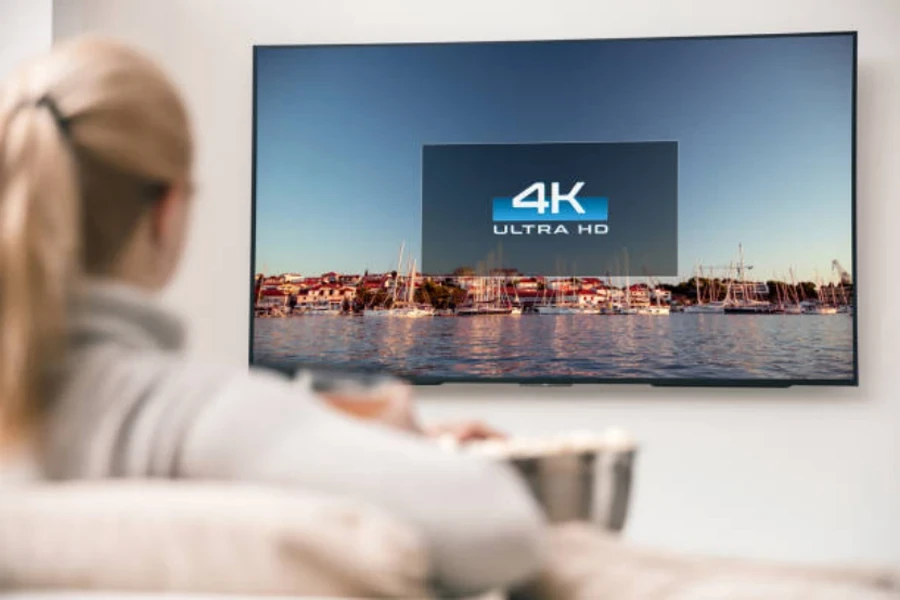
The OLED TV market is witnessing a transformative phase, marked by rapid technological advancements and shifting consumer preferences. This section delves into the emerging trends and key manufacturers shaping the future of OLED TVs.
Glowing trends
Currently, the OLED TV market is valued at USD 8.75 billion as of 2022. According to Introspective Market Research, this market is projected to expand significantly, reaching USD 31.81 billion by 2030. This growth trajectory represents a robust compound annual growth rate (CAGR) of 17.5% from 2023 to 2030. The OLED TV sector’s substantial growth is driven by the technology’s unique advantages, including superior picture quality, energy efficiency, and the increasing adoption of OLED displays in various applications beyond traditional television, such as smartphones, tablets, and digital signage systems. This market expansion is further supported by continuous innovations from leading manufacturers and a growing demand for high-quality display technologies worldwide.
The demand for OLED TVs has seen an unprecedented rise, driven by consumers’ growing appreciation for superior picture quality and design flexibility. Market analysts have observed a consistent year-over-year growth in OLED TV sales, attributed to these displays’ ability to deliver deeper blacks, more vibrant colors, and wider viewing angles compared to their LED counterparts. Moreover, the slim and flexible design of OLED panels has enabled manufacturers to produce TVs with minimal bezels, offering a more immersive viewing experience. This trend towards high-quality, aesthetically pleasing televisions reflects a broader consumer shift towards premium home entertainment solutions.
Manufacturers at the forefront

Several manufacturers are leading the charge in the OLED TV market, each bringing their unique innovations to the table. LG Electronics, a pioneer in OLED technology, continues to dominate the market with its comprehensive range of models that cater to various price points and consumer needs. LG’s investment in advancing OLED technology has resulted in features like 4K and 8K resolution, enhanced HDR capabilities, and AI-powered processing, setting new standards for picture quality and smart functionality.
Samsung Electronics has also made significant inroads into the OLED market with its introduction of QD-OLED TVs. Combining quantum dot technology with OLED, Samsung’s QD-OLED TVs offer remarkable color accuracy and brightness, positioning the company as a formidable competitor in the high-end segment.
Sony’s OLED TVs are renowned for their exceptional image processing and sound integration, offering an immersive audio-visual experience. Sony’s focus on creating TVs that provide cinematic quality and user-friendly interfaces has solidified its reputation among consumers seeking premium entertainment products.
Other manufacturers, such as Panasonic and Philips, contribute to the diversity and innovation within the OLED TV market. Their commitment to quality, coupled with unique features like Panasonic’s filmmaker mode and Philips’ Ambilight technology, enriches the overall landscape, offering consumers a wide array of options to suit their preferences.
As the OLED TV market continues to evolve, these manufacturers are at the forefront of technological innovation, driving the industry forward. Their efforts not only enhance the viewing experience for consumers but also push the boundaries of what’s possible in display technology. With OLED TVs becoming increasingly accessible, the future of home entertainment looks brighter than ever, promising unparalleled visual excellence and design innovation.
Criteria for excellence: Selecting the right OLED TV
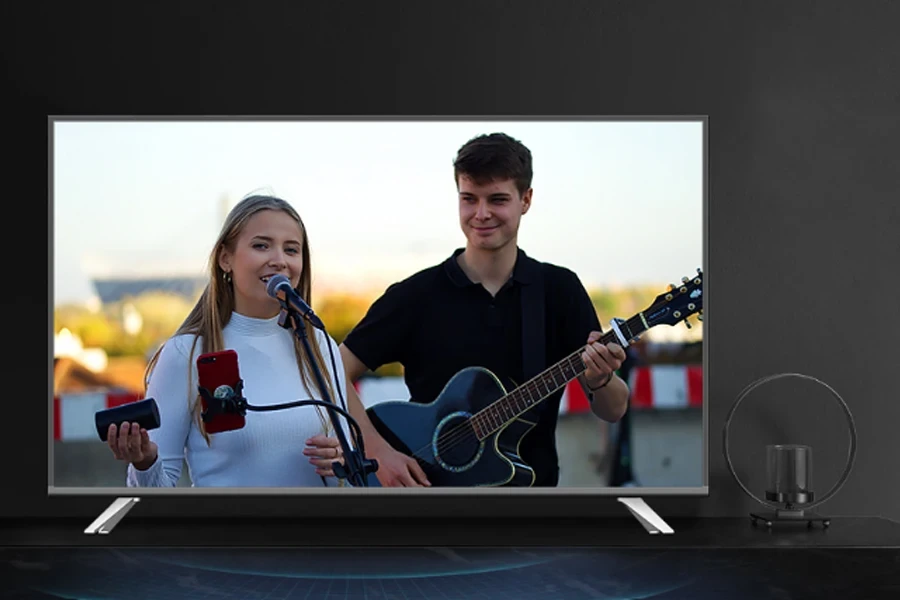
Selecting the right OLED TV requires a nuanced understanding of various factors that contribute to the overall viewing experience. From picture quality to future-proofing features and design considerations, each aspect plays a pivotal role in ensuring the selected TV meets and exceeds expectations.
Picture perfect
When evaluating OLED TVs, the paramount consideration is undoubtedly picture quality, which encompasses several key attributes: brightness, contrast, and color accuracy. These factors collectively define the visual experience, distinguishing an ordinary display from an extraordinary one.
Brightness: OLED TVs are celebrated for their ability to deliver deep blacks, but advancements in technology have also significantly improved their brightness capabilities. While specific nit levels (the unit of measurement for brightness) can vary among models, premium OLED TVs now boast peak brightness levels exceeding 800 nits, with some models reaching up to 1,000 nits or more in specific HDR (High Dynamic Range) scenes. This enhancement ensures that the picture remains vivid and detailed even in well-lit rooms, counteracting ambient light that could otherwise wash out the image.
Contrast Ratio: OLED technology inherently provides superior contrast ratios because each pixel emits its own light, allowing for precise control over luminance. This means that on a pixel-by-pixel basis, an OLED display can achieve true black by completely turning off, unlike LCDs that rely on backlighting. The result is an infinite contrast ratio, offering a visual depth and realism that dramatically enhances the viewing experience, especially in dark scenes where details are prone to getting lost.
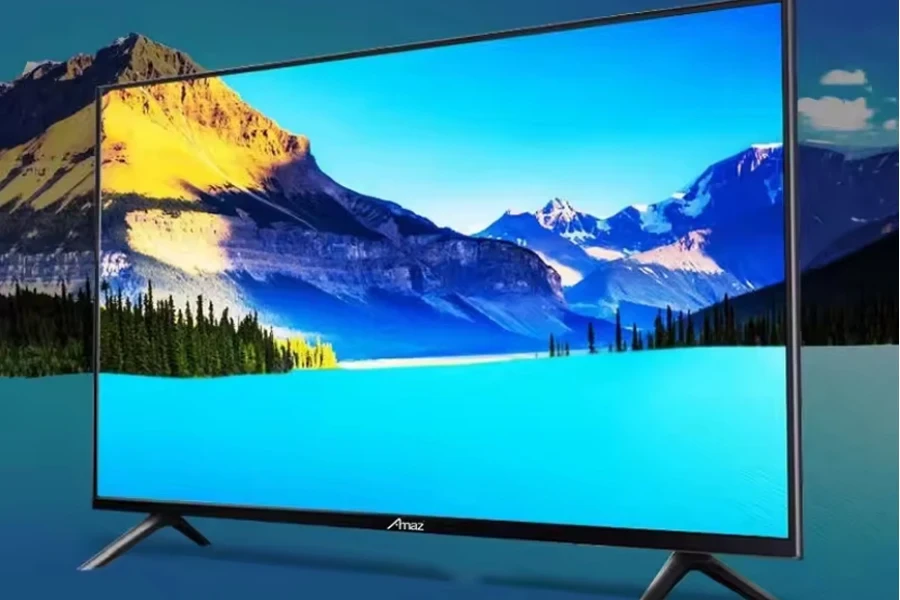
Color Accuracy: The color accuracy of OLED TVs is another critical aspect, with these displays capable of covering a wide color gamut. For instance, many OLED TVs cover over 99% of the DCI-P3 color space, a standard used in the film industry, ensuring that the colors viewers see on screen are as close as possible to the director’s intention. Moreover, OLED TVs often feature advanced color processing technologies that fine-tune hues, saturation, and brightness to deliver lifelike colors across a broad spectrum.
OLED TVs also benefit from panel uniformity, with minimal variance in color and brightness across the screen. This uniformity is crucial for maintaining consistent image quality, particularly in scenes with subtle gradations of color or light.
In practice, these features mean that whether you’re watching a high-octane sports event, enjoying a cinematic masterpiece, or presenting visually intensive content in a professional setting, OLED TVs can deliver a picture that is not just seen but felt. The vivid colors, deep blacks, and striking contrast create a more immersive and engaging experience that can captivate audiences and communicate visual messages with unparalleled clarity.
By prioritizing these aspects of picture quality, individuals and organizations alike can select an OLED TV that not only meets but exceeds their viewing requirements, ensuring that every visual encounter is as impactful as possible.
Future-proof features

In the rapidly evolving landscape of television technology, ensuring that an OLED TV can stand the test of time requires attention to several key features. These aspects not only enhance the current viewing experience but also safeguard the TV’s relevance and performance in the years to come.
Resolution: The resolution of a TV refers to the number of pixels that make up the picture on the screen, with higher resolutions offering greater detail and clarity. Currently, 4K (3840 x 2160 pixels) is the standard for high-definition content. However, with the advent of 8K resolution (7680 x 4320 pixels), selecting an OLED TV with 8K capabilities can be a prudent choice for those seeking the pinnacle of picture quality. While 8K content is still emerging, an 8K OLED TV ensures compatibility with future content advancements, providing a more future-proof investment.
Refresh Rate: The refresh rate, measured in Hertz (Hz), indicates how many times per second the picture is refreshed on the screen. A higher refresh rate results in smoother motion, which is particularly noticeable in fast-moving scenes in sports, action movies, and video games. Most OLED TVs offer a refresh rate of 120 Hz, doubling the standard 60 Hz found in many displays. This not only improves the fluidity of motion but also reduces motion blur, making the TV better equipped to handle the high-frame-rate content that is becoming increasingly common.

Connectivity Options: As the central hub of home entertainment systems, a TV’s connectivity options are crucial. This includes the number and type of HDMI ports, with HDMI 2.1 being the latest standard. HDMI 2.1 supports higher video resolutions and refresh rates, including 8K60 and 4K120, and features such as eARC (Enhanced Audio Return Channel), VRR (Variable Refresh Rate), and ALLM (Auto Low Latency Mode). These features are essential for achieving the best possible picture and sound quality from the latest gaming consoles and streaming devices. Additionally, USB ports, Wi-Fi, and Bluetooth connectivity are important for connecting a wide range of devices and accessing internet-based content.
Incorporating these future-proof features into an OLED TV selection strategy not only enhances the immediate viewing experience but also ensures that the TV remains compatible with evolving content standards and technologies. By prioritizing resolution, refresh rate, and connectivity options, buyers can invest in a television that continues to deliver exceptional performance and relevance in the fast-paced world of home entertainment.
Harmonizing with spaces

Selecting the right OLED TV goes beyond technical specifications to include the aesthetic integration of the device within its intended environment. The design and form factor of an OLED TV play a crucial role in complementing and enhancing the physical spaces they occupy, whether in a home, office, or public area.
Slim Profiles and Bezel-less Design: One of the hallmark features of OLED technology is its ability to offer exceptionally slim profiles, thanks to the self-emitting nature of OLED pixels that eliminate the need for bulky backlighting. This slimness allows for bezel-less or near-bezel-less designs, where the screen practically extends to the edge of the TV frame. This minimalistic approach can blend seamlessly into any decor, making the TV less of a bulky appliance and more of an elegant addition to the room. For example, LG’s Wallpaper TV models are so thin they can be mounted flush against the wall, resembling a piece of art more than a traditional television.
Flexibility and Mounting Options: The flexibility of OLED panels, in some cases, allows for curved or bendable screens that can offer a unique viewing experience and become a statement piece in any room. While curved TVs have become less common in recent years, the option for a curved display might appeal to specific users looking for a futuristic aesthetic or a more immersive viewing angle. Additionally, the lightweight nature of OLED TVs expands mounting and placement options, enabling creative installations like hanging the TV from the ceiling or custom recesses in walls, providing both functionality and design harmony.

Aesthetic Considerations Beyond the Screen: Beyond the immediate physical attributes of the TV itself, manufacturers are increasingly paying attention to how their products can aesthetically complement various interior designs even when turned off. Some OLED TVs come with customizable frames or stand options that can match different furniture styles, from modern minimalist to traditional. Moreover, ambient mode features, available in models from brands like Samsung, allow the TV to display art, photos, or blend into the wall behind it, ensuring that the large black screen doesn’t dominate the room when not in use.
Incorporating an OLED TV into a space is not just about choosing a device that meets viewing needs but also selecting one that enhances the aesthetic and functional aspects of the environment. By considering the design and form factor, individuals and businesses can select an OLED TV that harmonizes with their space, elevating the overall ambiance and ensuring the TV adds value both as a technological marvel and as a piece of decor.
Selecting the right OLED TV involves more than just comparing specs; it requires a holistic approach that considers picture quality, future-proofing features, and design aesthetics to ensure the chosen model meets the specific needs and preferences of its environment.
Leading the charge: Top OLED TV models of 2024

In the realm of OLED TVs, picture quality and performance are paramount considerations for businesses that demand high-end displays for their professional settings. Leading the pack in 2024 are models like the Samsung S95C, Sony A95L, and LG OLED evo M Series. Each of these OLED TVs has been engineered with cutting-edge technology to deliver an unparalleled viewing experience, with features catering specifically to the needs of the corporate world.
Pioneers of performance
Starting with the Samsung S95C, this model is at the forefront of OLED technology with its innovative Quantum Dot enhancement. The inclusion of this feature maximizes the vibrancy of colors, creating a picture that’s not only bright but also accurate and life-like. For businesses, this means that colors in logos, presentations, and videos are rendered with exceptional fidelity, ensuring that brand visuals are consistent and impactful. The Samsung S95C also features an adaptive brightness technology, which intelligently adjusts the display based on ambient light conditions. This is particularly beneficial in business environments where lighting can vary, as it maintains optimal visibility without the need for manual adjustment.
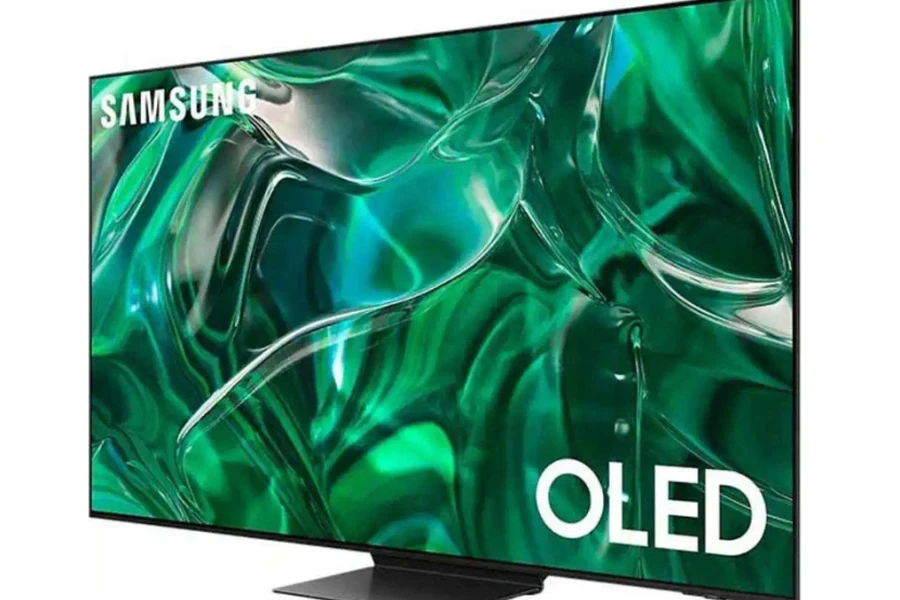
On the other hand, the Sony A95L is a testament to Sony’s mastery in color precision and motion clarity. Known for its proprietary XR Triluminos Pro technology, the A95L provides a broad spectrum of colors, making it an ideal choice for professional settings where color differentiation is crucial, such as design studios or advertising agencies. The Cognitive Processor XR, which powers the A95L, analyzes content in the same way that the human eye focuses, delivering a realistic image that captures the viewer’s attention. This processor also ensures that motion is handled with superior finesse, smoothing out fast-moving sequences that are common in product demos or dynamic media. For businesses that often play high-quality video content, the A95L ensures that fast action is crisp and clear with no distracting blurs.
LG’s contribution to the 2024 OLED lineup is the OLED evo M Series, which has taken a significant leap forward with its brightness and detail. The OLED evo M Series showcases LG’s latest advancements in panel technology, offering increased luminance for a brighter image without sacrificing the deep blacks that OLEDs are renowned for. This results in a more vivid picture that stands out, even in well-lit office spaces. Additionally, the LG OLED evo M Series is equipped with AI Picture Pro, an intelligent algorithm that enhances picture quality by analyzing the type of content being displayed. This ensures that whether it’s a spreadsheet with fine text or a 3D rendering, the image is optimized for clarity and detail.
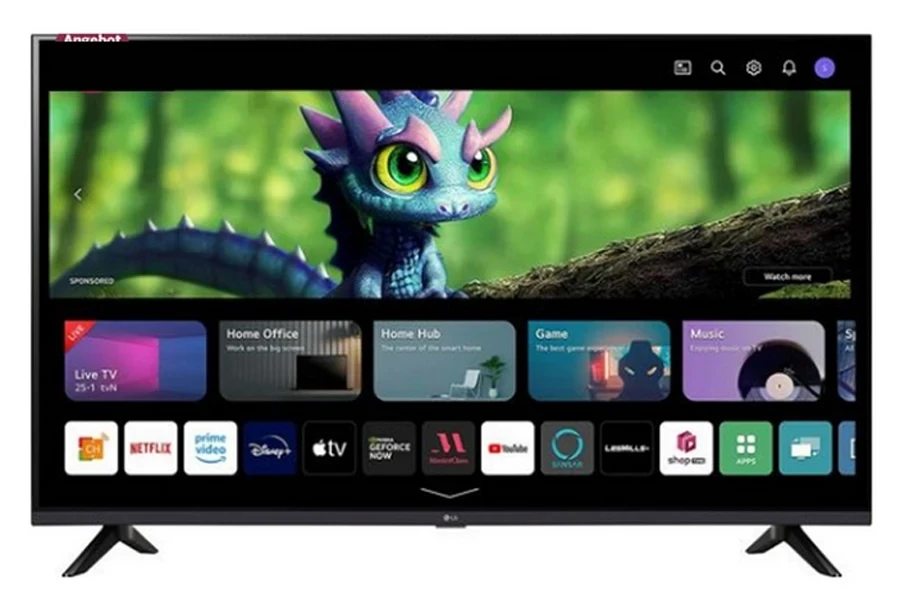
For businesses, the relevance of these features lies in their ability to convey information in the most effective manner. The precise color rendering and advanced brightness of these OLED models mean that presentations and visual materials are displayed with a level of detail and clarity that can captivate and persuade clients or communicate ideas more powerfully within a team.
The Samsung S95C, Sony A95L, and LG OLED evo M Series also boast impressive contrast ratios. Thanks to the self-emissive nature of OLED technology, which allows individual pixels to turn on and off independently, these TVs deliver perfect blacks, creating an infinite contrast ratio. In a business environment, this translates into depth and dimensionality in images, which can be especially important when showcasing products that need to stand out or when delivering presentations with a high level of detail.
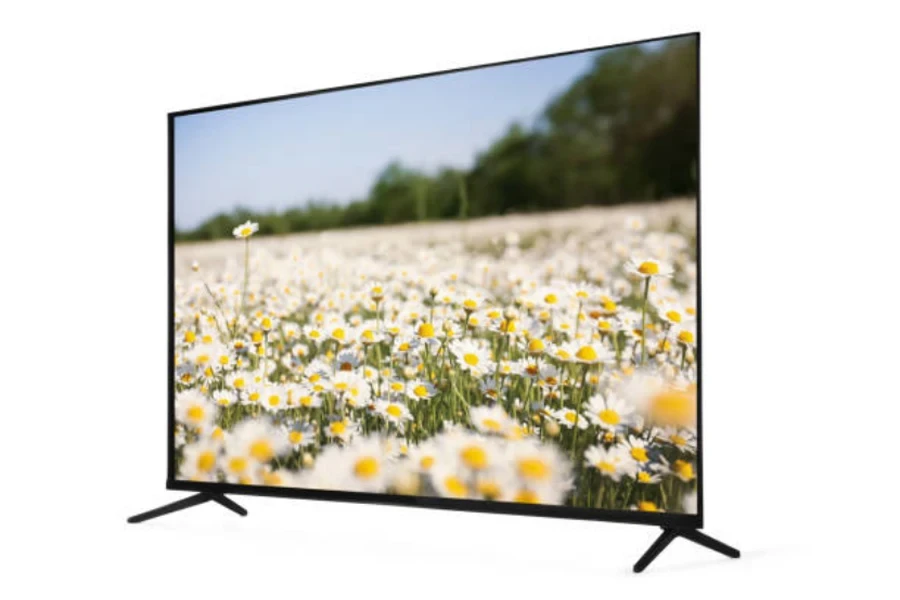
Furthermore, the anti-reflective coatings and viewing angle stability of these OLED models are features not to be overlooked in a corporate setting. Glare can be a significant distraction in well-lit offices, and the anti-reflective surfaces on these TVs minimize this, ensuring that on-screen content remains visible from any seat in the room. This is enhanced by the wide viewing angles inherent to OLED panels, which mean that the picture retains its integrity from almost any perspective, a necessary feature for conference rooms and collaborative spaces.
Finally, each of these models is equipped with an advanced upscaling engine that ensures legacy content and lower resolution sources are displayed with as much clarity as possible. This is particularly useful for businesses that may need to display a variety of content types, including those not originally produced in 4K or 8K resolution.
The Samsung S95C, Sony A95L, and LG OLED evo M Series exemplify the state-of-the-art picture quality and performance that are essential for business use. Their capabilities extend beyond mere entertainment, becoming powerful tools for communication, branding, and content delivery in professional environments.
Innovation icons
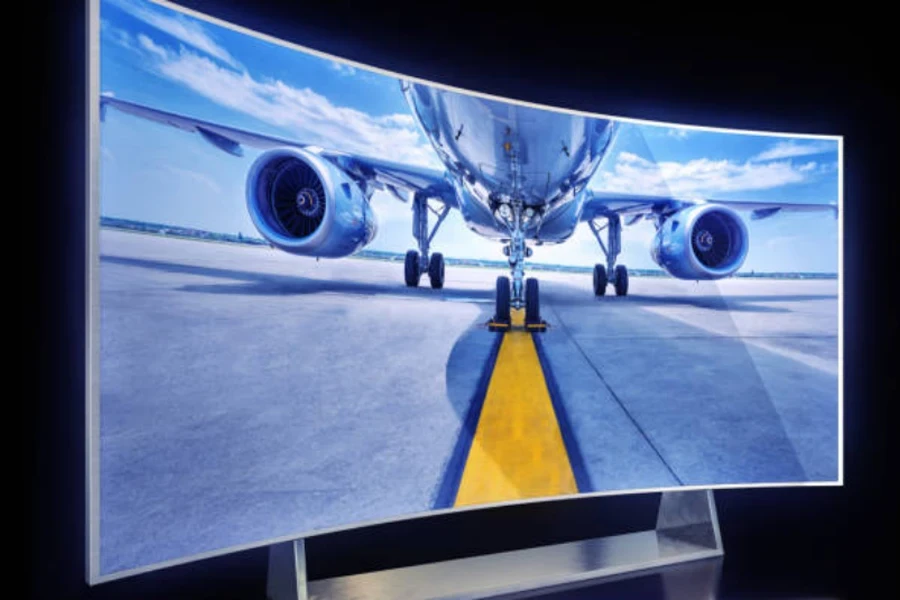
In an age where smart technology is ubiquitous, OLED TVs have embraced a myriad of innovative features that extend beyond the traditional viewing experience. These advancements are particularly beneficial for businesses, as they have the potential to streamline operations and integrate seamlessly with the Internet of Things (IoT) devices, enhancing overall efficiency and productivity.
One of the standout smart capabilities of the latest OLED TVs is their ability to act as a central hub for smart office devices. For instance, certain models from the 2024 lineup come with built-in support for IoT protocols such as Zigbee and Thread. This means they can directly communicate with a wide range of devices, from smart lights to thermostats, without the need for additional hubs. In a business setting, this centralization can drastically simplify the management of the office environment, allowing for adjustments to lighting or temperature directly from the TV interface or linked mobile applications.
Voice control is another smart feature that has become increasingly sophisticated in OLED TVs. With natural language processing abilities improving, commands are now more intuitive and can perform complex tasks. In a professional scenario, the ability to control the TV through voice can expedite presentation setup, enable quick changes during meetings, and even allow users to retrieve documents or data displayed on screen without manual input. Moreover, the compatibility with popular virtual assistants like Amazon Alexa, Google Assistant, and Apple’s Siri ensures that these OLED TVs can easily fit into an existing ecosystem of smart office equipment.
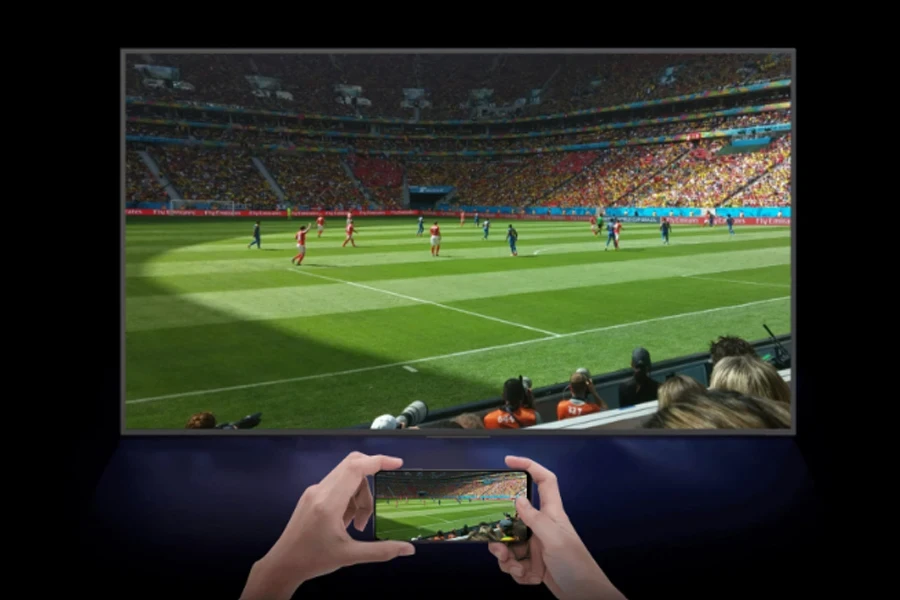
Another innovative aspect of modern OLED TVs is their enhanced user interfaces (UIs) which are designed with the professional user in mind. The UIs have evolved to offer more than just content navigation; they now provide custom business applications and tools that can integrate with cloud services and office software suites. For example, some OLED models are equipped with video conferencing apps, calendar integration for meeting reminders, and even analytics for audience engagement during presentations. By bringing these functionalities to the large screen, OLED TVs become a multifaceted tool that can support various aspects of business communication and collaboration.
Additionally, the incorporation of Artificial Intelligence (AI) in OLED TVs has opened up new frontiers for business applications. AI-powered recommendation systems can curate content related to the company’s industry, such as news updates, market trends, and educational materials, which can be displayed in common areas or waiting rooms to keep both employees and clients informed. AI also plays a role in enhancing security features, like facial recognition for personalized access to the TV and its content, ensuring that sensitive information is protected and accessible only to authorized personnel.
The 2024 OLED TVs have not shied away from including features that promote sustainability and energy efficiency. AI energy management systems analyze usage patterns and automatically adjust settings like brightness and sleep timers to minimize power consumption. For businesses, this not only translates to cost savings but also aligns with corporate social responsibility goals by reducing the carbon footprint.

Lastly, the latest OLED TVs come with improved connectivity options that are essential for modern business operations. Advanced models now offer higher bandwidth capabilities with the latest HDMI standards, USB-C connectivity for swift data transfer and charging, and even wireless options that support Wi-Fi 6 and 6E for stable, high-speed internet connections. This array of connections is crucial for businesses, enabling them to hook up laptops for presentations, stream content in ultra-high definition for client pitches, or quickly share data across devices during collaborative sessions.
These innovative smart capabilities of OLED TVs provide businesses with a competitive edge by improving efficiency, reducing costs, and enhancing the overall professional environment. As companies continue to seek out ways to optimize their operations and create more interactive, engaging workspaces, the smart features of OLED TVs will undoubtedly become an integral part of the corporate landscape.
Conclusion
Throughout this exploration of OLED TVs in 2024, we’ve delved into the nuances of picture quality, innovative features, and design elements that align with both aesthetic and practical demands. From the cinematic brilliance of high-end models, tailored for immersive viewing experiences, to gaming-centric TVs designed with performance in mind, and onto smart connectivity options catering to the seamless integration within digital ecosystems, the landscape of OLED technology presents a versatile range of choices. As professionals in the industry, understanding these advancements and how they cater to varied user needs is crucial in guiding selections that not only meet current standards but are poised to embrace future innovations.




